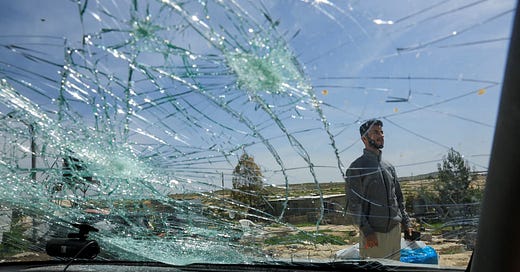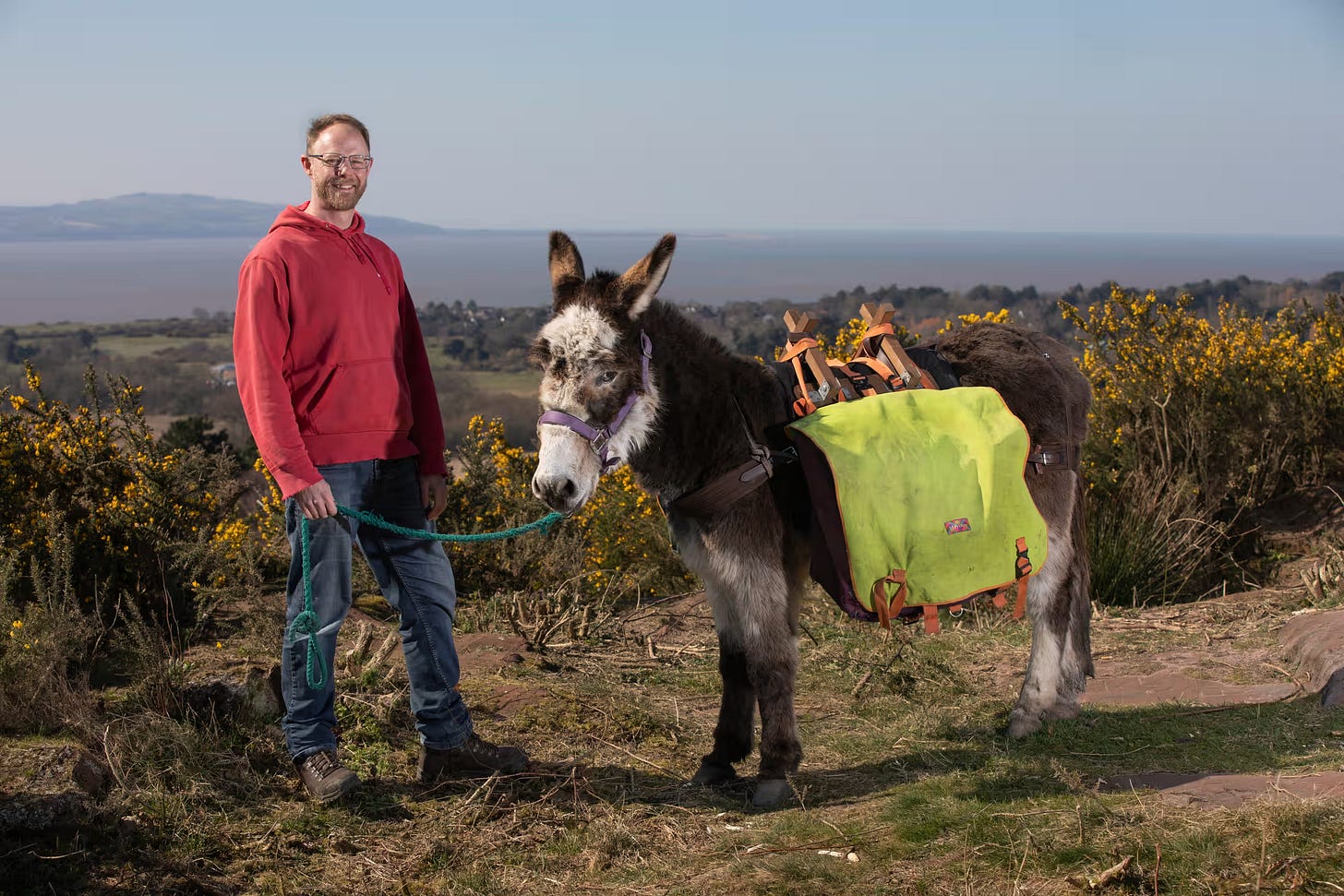What to Watch…
For a good six-part thriller series, watch Informer on Britbox. It is 10 years old, but moves quickly. In east end London, a two-bit criminal, Raza Shar, is coerced by a nasty and brutal counter-terrorism agent Gabe Waters into being an informer. This is a psychological thriller, with a good plot and great acting. Very enjoyable — Here’s the trailer.
In Plain Sight is a 2016 three-part BBC policier which is also good. In Scotland in the 1950s, a serial killer known as “The Beast of Birkenshaw” killed at least eight people. This true story has been fictionalized – it’s worth watching. The trailer is here.
Ludwig is cute – if a bit over the top– as they say in the UK. This series is about a shy and retiring fellow who loves puzzles. His brother, a top cop in London, goes missing. His wife inveigles the brother (who is not so secretly in love with her) to impersonate the missing cop (as the brothers are alike in appearance) and take his place at headquarters to find out any intel. Results are funny, and often witty. Of course, instead of finding the brother, the retiring brother, using his puzzle master skills, gets involved in solving other crimes. Cute. Have a look at the trailer.
Below, from top left: George Archibald dances with a crane named Gee Whiz (International Crane Federation); Vritika Gupta as Reena Virk in Under the Bridge (Bettina Strauss/Hulu); one of the buildings in which Conclave was filmed; Ludwig (BBC/Colin Hutton); Mahmoud Khalil as himself in The Encampments (Watermelon Pictures)
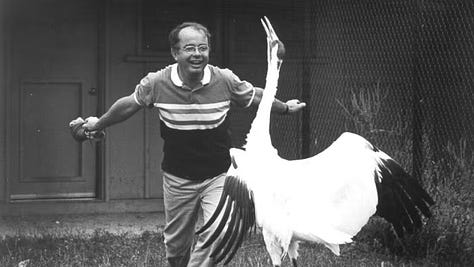


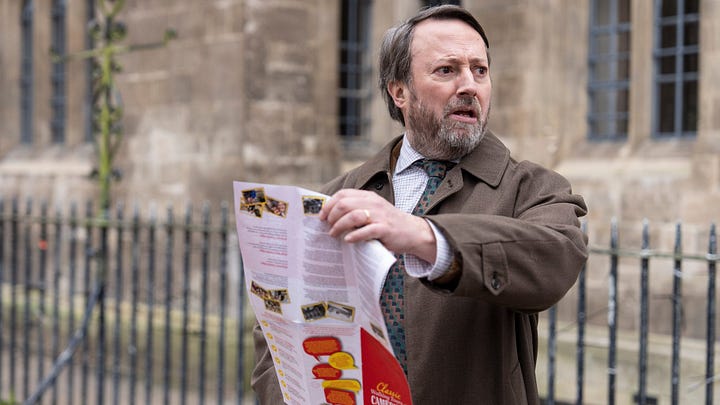
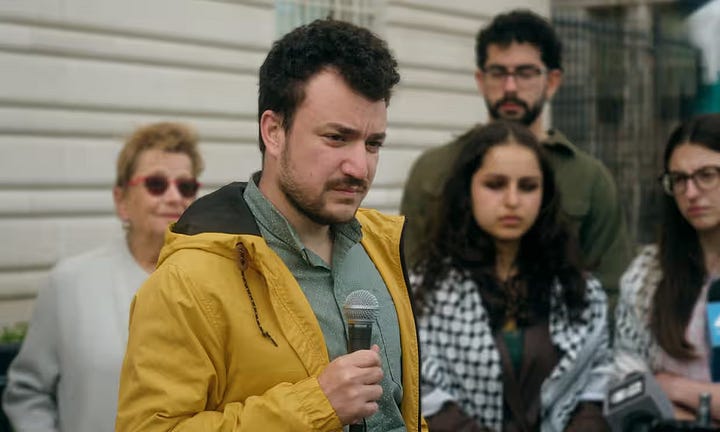
The Worst Person in the World (Norwegian: Verdens verste menneske) is a 2021 romantic comedy-drama film, about a young medical student who craves adventure but also tedious stability. Worth watching on Kanopy. The trailer’s here.
The Nature of Things on CBC-GEM is a fascinating compendium of hour-long specials on plants, animals and the earth. I just watched an hour on whooping cranes. Twenty years ago there were barely five hundred of them and now there are a few thousand. This episode features a Canadian ornithologist who lived among the birds and showed them how to live outside of captivity.
I watched the partly-Canadian (mostly American) series Under the Bridge (2024), based on the 2005 book of the same title by Canadian writer Rebecca Godfrey. Twenty-eight years ago in Victoria BC, 14-year-old Reena Virk a lonely and troubled teen, was murdered and drowned by some of her classmates. This is a dramatization of what happened, with some invented twists and turns which were not in the book. Yet it’s these twists and turns that make the eight-part series spellbinding. Also the attention to detail is excellent as is the portrayal of Reena, the outsider, and the terrifying girls who “befriended” her. Watch it free on CBC-GEM — have a look at the trailer.
In light of events at the Vatican in the last weeks, I watched Conclave. Somehow watching two hours of squabbling and conniving cardinals trying to jockey for power isn’t much of a thrill. Of course, there is the good, the bad, and the ugly among the cardinals: there is the pomp and the sumptuous surroundings. But on the down side there’s no Vatican art to look at. I don’t think there were any shots of the delights of Rome, or even a still photo of the seven hills of Rome in the distance. It certainly does not pass the Bechdel test. If you insist, have a look at the trailer here.
Recently, Watermelon Pictures released a new documentary The Encampments. Primarily it’s about the pro-Palestine student encampments at Columbia University last spring, but I read it looks at other protests at other US campuses. It’s playing the film festival circuit now, but I’m sure it will be streaming very soon on a major service. Watch the trailer here.
What to Read…
Lawrence Wright’s new novel The Human Scale can be wrapped up as “everyone good dies in the end”. Wright wrote The Looming Tower (2005) about 9-11 that received excellent reviews. The Human Scale is not such a good book. Maybe a good try, but on balance he portrays the Israelis as sane and justice-oriented with a few bad apples in authority near the top. Wright’s characters are tired, predictable and one-dimensional. Jossi (unquestioningly the hero) is a tough 60-year-old Jewish Israeli cop, whose wife died of cancer and whose parents were Holocaust survivors. He supports Israel, its illegal occupation and actively participates in the brutality the Israeli police visit on Palestinians in Hebron in the West Bank. Tony Malik is a CIA agent, whose Palestinian father emigrated to the US before Malik was born. Malik travels to Hebron (!!) for a family wedding. He is on leave from the CIA because he’s recovering from injuries received in a bomb blast the year before when he was on assignment somewhere in the Middle East.
The book’s action spans mid-September 2023 to 7 October. Malik becomes enmeshed in the murder investigation of Hebron’s former police chief Jacob Weingarten. This is part mystery, part thriller, part social justice tale as Malik has to win the friendship and support of the new police chief and his corrupt superiors as well as his Palestinian family’s trust.
What shows me where Wright is coming from is that the author writes that the murdered Weingarten was beheaded. In the book, some cops claimed Hamas did it, but others insist beheading was not Hamas’ modus operandi. Now we know, that none of the 1200 Israelis who died on 7 Oct were beheaded by Hamas. The fact that Wright raises this false flag means that he and others still want to salute it—despite it being a lie.
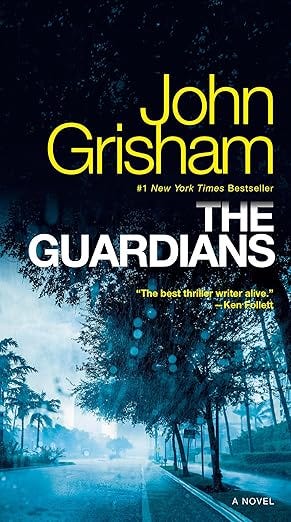
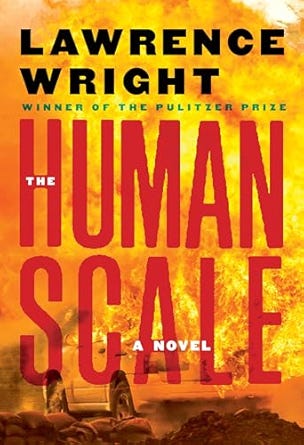

The Guardians, by John Grisham, is fascinating. Cullen Post is a lawyer in the southern US who hated being a lawyer. He decides to study religion and qualifies as an Episcopal clergyman. Post’s acumen in the law, coupled with his Christian calling, leads him to free the wrongly convicted. Employed at little more than minimum wage by a charity called The Guardian Ministries, Post drives for hours throughout the US south to visit his caseload of six men who are sitting on death row in various prisons for crimes they (probably) did not commit. All are Black. Grisham always has interesting observations and criticism about the American judicial system—this novel is no exception. Worth reading, I borrowed the e-book from Halifax Public Libraries.
“What counts as antisemitism” by John Lorinc
The June ‘25 issue of The Walrus features an article “What Counts as Antisemitism?” by John Lorinc. In more than 5,000 words he describes Canada’s mainstream Jewish community’s fixation with antisemitism. Lorinc is himself Jewish from a Hungarian immigrant background. He opens with an interview with an 88-year-old Jewish senior, Joel Sacke in Toronto. He attends most local demonstrations and marches for Israel. Lorinc leaves no stone unturned when it comes to describing (and subtly defending) many of the arguments about the rise of antisemitism in Canada.
Lorinc writes,
“Antisemitism, of course, is by no means the world’s only hatred. But its resurgence—in Canada and elsewhere—has raised troubling questions, not just about the tenacity of this venerable form of racism but also the insidious ways in which it has reinserted itself into the politics of both the left and the right. For the members of racial or religious minorities in any society, there’s rarely much mystery about the links between verbal hatred, physical violence, and the risk of political persecution.”
This suggests he’s actually going to also examine racialized people’s difficulties with “verbal hatred, physical violence, and the risk of political persecution”. But alas, he does no such thing.
In fact, to read the article you would never know that 11 Muslim Canadians – and not one Jewish Canadian — were killed by hate crimes in the last seven years in this country. As Mustafa Farooq, then-head of the National Council of Canadian Muslims (NCCM), said in 2021,
“The reality is that Canada has suffered more mass killings motivated by Islamophobia in the last five years than any other country in the G7.”
In addition, looking at racism and discrimination through an intersectional lens, means seeing that discrimination is also directed at women more than men. The Director of Research and Policy for the Canadian Arab Institute noted that
“Arab women in Canada suffer the highest unemployment rate compared to any other demographic group.”
About 80% of Lorinc’s article deals with Canadian Jews’ proud past, their fight against antisemitism, their visceral fears of violence against them, the Holocaust and the problem of antisemitism on the right and the left. By the way, please show me one serious example of the left in Canada espousing antisemitic views and supporting antisemitic activities. Lorinc buys the notion that Jews face a rising risk of antisemitism in Canada– yet, surprising, he doesn’t necessarily tie it to Israel’s genocidal war against Palestinians.
Lorinc never mentions an important 2024 article by Jewish sociologist Sheryl Nestel, “B’nai Brith Audit of Antisemitic Incidents: an unreliable and dangerous document” which questions the Jewish establishment’s figures on antisemitic incidents. Nor has he read Professor Emeritus Larry Haiven’s “Making accusations of antisemitism with hardly any facts” in Canadian Dimension. It examines the media’s insistence on conflating hatred of Jewish people with legitimate and necessary criticism of Israel. Both Nestel and Haiven are leading members of Independent Jewish Voices Canada (IJVCanada.org— I too am a member) the largest antizionist Jewish organization in Canada. Despite having thousands of members across Canada, and many activities and webinars listed on its site, Lorinc looked at only a handful of Jews who refuse to go along with Israel’s genocide.
The article is 80% the “company line”. Lorinc quotes Jewish people who defend Jewish supremacy as a way to fight antisemitism. Lorinc also zeroes in on Jewish feelings and fears, on the pro-Israel lobby’s wish to impose the IHRA on governments, institutions, schools and more. About 20% of the article describes the other side of the Jewish community– those who were part of campus encampments, or demonstrate for Gazans, plus hundreds of Jewish academics and health care workers that want a ceasefire in Gaza, and an end to Settler and army violence in the West Bank.
Listen to these Podcasts…
The Guardian Long Read has a nicely written article about Peter Herrmann and his family. More than 50 years ago, Herrmann’s father and mother were “illegals” – KGB agents who went to live in the US, raise families as Americans and spy for the USSR. If you haven’t seen it yet, I highly recommend you watch the excellent 2013 TV series The Americans which is about Soviet “illegals” living in a Washington suburb in the 1980s. Peter’s father recruited him to the KGB, but Peter (who attended McGill then an ivy-league US university and wanted a “normal” life) rebelled. You must hear this, or you can read it here.
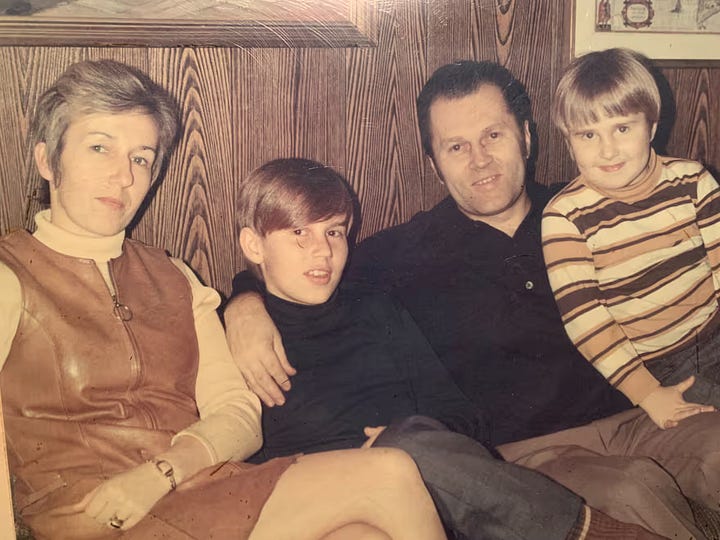

Left: 1970s photo of Peter Herrman, his mother Inga and father Rudy, plus younger brother.
I can’t plug The Daily News enough. It’s a podcast by Nora of Nora and Sandy: in six minutes you can learn a lot about what the mainstream media never tells you. Did you know that students in Québec protested because they are barred from using their cellphones in school? Did you know that hundreds of Montréal hotel workers returned to work after their employers locked them out six months ago? Did you hear that Calgary cops are asking kids to stop playing a game because they might be shot by Calgary cops? Listen to The Daily News here.
Bone Valley Season 2, is worth hearing. I thought Season 1 was excellent; Season 2 is a bit more emotionally connected and, in a way, more shocking than Season 1. You can read my review of the first season here. The series focuses on Leo Schofield of central Florida. In 1987, his wife Michelle was murdered. Though he claimed to be innocent, Leo was found guilty of killing her. He spent 35 years in prison for a crime he didn’t commit. Gilbert King, a Pulitzer prize-winning journalist, decided to investigate—and found the man who did kill Michelle. Now King has to convince the authorities in a conservative punitive judicial system to release Leo—and charge someone else. This is a brilliant and deep series. I highly recommend you listen to the trailer here.
What’s New?
Adam Lee, 43, walked the 700 miles (1126 km) from his Liverpool home to Dorset in southern England with his friend Martin, the donkey. Lee went to a local farm to adopt Martin; they started their “slow travel” south. As Lee noted,
“People would fall over themselves to help us – letting us camp on their farms, giving me hot food and coffee, cheering us on. Nobody ever turned me away. Having Martin as my partner definitely opened doors – my new girlfriend calls it “playing the donkey card”. My conclusion was that people want to be friendly, but sometimes they just need an excuse.”
Food wars: delicacies in the US Senate vs Québec’s National Assembly
I just read that the US Senate Dining Room has served this soup every day since 1903! Sorry no metric translation, no guarantees of good taste — and this recipe is for the meat tolerant:
Bean Soup Recipe (warning: for 5 gallons):
3 pounds dried navy beans
2 pounds of ham and a ham bone
1 quart mashed potatoes
5 onions, chopped
2 stalks of celery, chopped
4 cloves garlic, chopped
half a bunch of parsley, chopped
Clean the beans, then cook them dry. Add ham, bone, and water and bring to a boil. Add potatoes and mix thoroughly. Add chopped vegetables and bring to a boil. Simmer for one hour before serving.
And back in Canada,


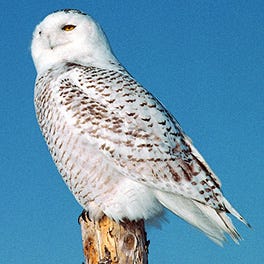
Quebec’s flower, the iris; the fleur-de-lis flag; and Quebec’s bird, the Snowy Owl
Here’s the menu from le restaurant Le Parlementaire, in the Québec National Assemby, Québec City. From its very imaginative menu:
“Ensuring that its operations are part of a sustainable approach, such is the daily mission of the restaurant carried out by the chefs and their team members. Our menus, crafted with care and passion, are mindful of using seasonal produce and of respecting the environment. Consuming locally grown foods is a winning choice for everyone in terms of taste, freshness and cost savings. Who knew that supporting nearby Québec producers could be so delicious!
Discovery Menu /
A tribute to Pierre Fortin, Member for Gaspé and Speaker of the Legislative Assembly, 1875-1876.This menu was inspired by Le golfe du Saint-Laurent au XIXe siècle. Le Québec maritime de Pierre Fortin.
The Protection of Fisheries
“[Translation] Fortin was astonished that lobster was not the object of more significant trade. […] The Îles-de-la-Madeleine and Côte-Nord regions were already known for that “excellent item of sustenance.””
– Le golfe du Saint-Laurent au XIXe siècle, p. 66
Lobster Tartine
Thin artisanal bread crouton, lettuce, tomatoes, Saint-Laurent lobster pan-cooked in butter, bacon lardons and fresh peas, lemon zest and “Fumoir d’Antan” smoked herring mayonnaise [below Rays-Lobster Tartine, photo from Instagram]
Spotlight on Maritime Québec
“[Translation] Pierre Fortin was a guardian of law and order. His main role on the La Canadienne schooner was to ensure proper administration of justice and protect the Gulf of St. Lawrence fisheries.”
– Le golfe du Saint-Laurent au XIXe siècle, p. 2
Fortunate Catch
Atlantic halibut marinated in salted herbs then roasted, mushroom sauté, Fines Herbes par Daniel sea asparagus, Île d’Orléans asparagus, robust roast chicken jus accented by mussels
Pierre Fortin, Member for Gaspé
“[Translation] The vast telegraphic network, conceived by the Member for Gaspé in 1875 and finally completed in 1891, improved safety by reducing the time it took for rescuers to reach vessels in distress.”
– Le golfe du Saint-Laurent au XIXe siècle, p. 18
Mingan “Terra Firma”
Hazelnut sponge cake, ganache of Brûlerie du Quai, milk chocolate spiked with Rubis Nordique lingonberry gin liqueur, oat crumble, toasted barley and oat ice cream, confit lingonberries
Fair trade coffee / Infusion
Ruby spritz spring cocktail
Rubis Nordique lingonberry gin liqueur, Radoune gin, sparkling wine and soda”
Ars Gratia Artis
In a statement shared with Hyperallergic, EEFP (Energy Embargo for Palestine) activist Mara Adam said it was “unconscionable for a British public institution like the British Museum to host an event in celebration of Israel — a state currently perpetrating war crimes and genocide in Gaza.”
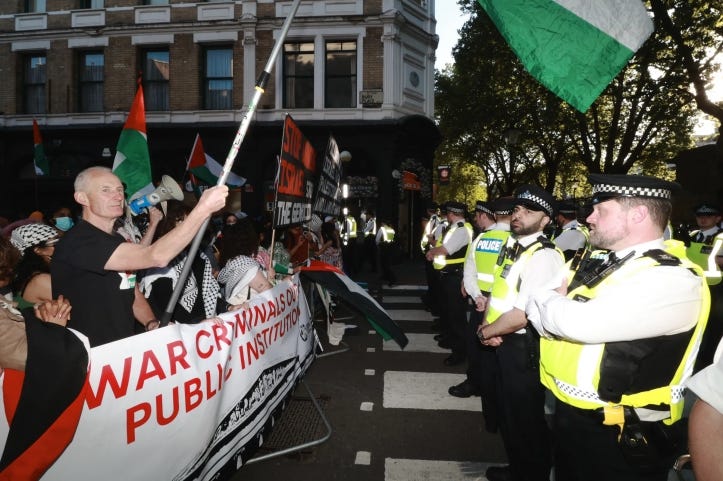
Weekend Weather Check: Rafah Refugee Camp
Photo at the Top: Basel Adra, co-director of the Academy Award winning film No Other Land sees the damage caused by Jewish Settlers in Susiya, the Occupied West Bank. (photo credit: Mussa Issa Qawasma/Reuters). Read more here.
Share this:
Related
What to Watch– reviews of 2 blockbuster series about Jewish life; What to Read– a murder mystery with a disturbing edge and a smashing autobiographyApril 10, 2020In "Book review"
Conspicuous in their AbsenceOctober 9, 2022In "anti-semitism"
Mainstream Canadian Jewish Organizations Don’t Get It — Black Lives Do MatterJune 4, 2020In "anti-semitism"

